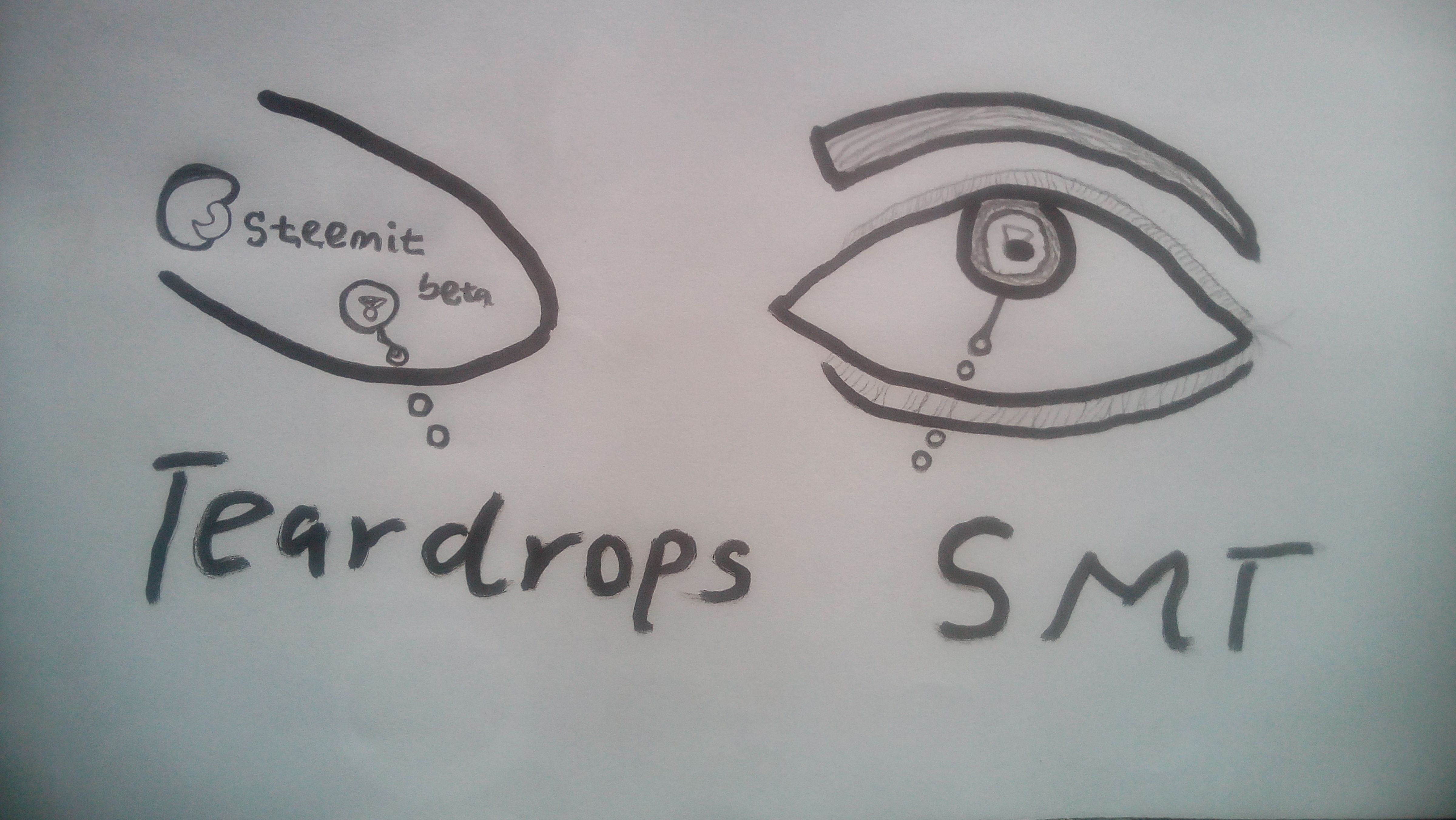TEAR DROP POIKiLOCYTE | TEARDROPS SMTs ( RESEARCH ORIENTED )
Tear drop poikilocyte is a medical condition where the red blood cell changes from its normal flexible biconcave disc structure to a shape - like teardrops.

The term poikilocyte describe a condition where there is variation in the shape of the erythrocyte (red blood). The most common of these variation is a tear drop shape. This change in shape is caused by the following condition:
• Myelofibrosis
• Etramedullary haemopoiesis
•Beta thalassemia major
Myelofibrosis is a clonal stem cell disease characterized by progressive generalized fibrosis of the bone marrow in association with the development of haemopoiesis in the spleen and liver.
This condition has many names which includes ; idiopathicmyelofibrosis, myelofibrosis with myeloid metaplasia (MMM) ,myelosclerosis ,agnogenic myeloid metaplasia. Clinically, this leads to anaemia and massive hepatosplenomegaly. In some patients there is osteosclerosis and the fibrosis of the bone marrow is secondary to hyperplasia of abnormal megakaryocytes . Anaemia is usual but a normal or increased haemoglobin level may be found in some patients .
Extramedullary haemopoiesis
is the production of red blood cell outside of bone marrow . this can happen in fetal development (normal state), and then in pathological condition (myelofibrosis, iron deficiency anaemia, beta thalassemia major)where yolk sac, liver and spleen are been recruited to start producing red blood cell when the demand for it is high.Because the body is in the need of red blood cell , the immature RBC (Normoblast) is push to the peripheral circulation which endanger the cell membrane of the cell to change in shape because it has not mature enough to resist deformation when navigating the blood vessel hence , may lead to tear drop shape.
At this juncture , lets switch to teardrops SMT.
 Here, what we are talking about is a smart media contract token(SMTs) not a medical condition which is going to be a peer - to - peer cryptocurrency whose transaction are to be recorded in a steem blockchain ledger . Steem blockchain is a cryptocraphically secured ledger that is permissionless and decentralized . So, teardrops SMT is aimed to uses steem blockchain innovatives to run electronic payment system.Teardrops token and other SMTs project is where all eye is on as a result of its potential to skyrocket the value of steem blockchain technology.
Here, what we are talking about is a smart media contract token(SMTs) not a medical condition which is going to be a peer - to - peer cryptocurrency whose transaction are to be recorded in a steem blockchain ledger . Steem blockchain is a cryptocraphically secured ledger that is permissionless and decentralized . So, teardrops SMT is aimed to uses steem blockchain innovatives to run electronic payment system.Teardrops token and other SMTs project is where all eye is on as a result of its potential to skyrocket the value of steem blockchain technology.
Conclusion
Tear drop poikilocyte is a condition where red blood cell has a tear drop - like shape instead of the flexible normal biconcave disc structure . This may appear in blood film of normal individual like in the case of fetal development or pathological condition as in the case of myelofibrosis, beta thalassemia major and iron deficiency anaemia. It is a presumptive diagnosis of the named pathological condition. While teardrops token is a potential peer to peer cryptocurrency that will use steem blockchain innovative to run electronic payment system.
Thanks to : @surpassinggoogle who is the brain behind teardrops SMT , @steemstem and @stemng for distilling STEM world. Thanks to other steemians who have been one way or the other help to develop steem blockchain : men like @eurogee in @euronation, @arcange in steem SQL, @hr1,@ghenga, for your incessant support and endorsement in order to make steem blockchain better.Thanks to all steemians. I still remain your boy @steemfirst
References
Cross N.C and Reiter A .(2002) Tyrosine
kinase fusion genes in chronic
myeloproliferative disease.
Leukemia16,1207-12
Baxter E.J., Scott L.M., Cambell P.J. et
al(2005)Acquired mutation of the
tyrosine kinase JAK2 in human
myeloproliferative disorder.lancet
365,1054-61
Schafer A.I. (2006) Molecular basis of the
diagnosis and treatment of
polycythemia vera and essential
thrombocythemia. Blood107,4214-22
Cross N.C and Reiter A.(2002)Tyrosine
fusion genes in chronic
myeloproliferative
disease.Leukemia16,1207-12
Tefferi A., Mesa R.A. , Nagorney D.M et al
(2000) splenectomy in myelofibrosis
with myeloid metaplasia : a single
institution experience with 223
patients.Blood 95,2226-23
Benett C.L., Luminari S., Nissenson A.R. et
al (2004) Pure red - cell aplasia and
epoetin therapy. N Engl J Med 351,1403-
8
Eschbach J.W (2005) Iron requirements in
erythropietin therapy. Best pract Res
Clin Haematol 18,347-16


